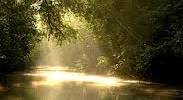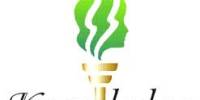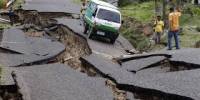About Liberation War Museum
The Liberation war museum (LWM) was established in 1996 to Honor of Bangladeshi people’s heroic struggle for democracy and national rights through the armed resistance against the Pakistan Army after it had unleashed one of the worst genocides in history upon the people of then Eastern Pakistan in the middle of night 25 March 1971 The nine months long war led to the emergence of independent Bangladesh as a secular democratic state in December 1971. The museum bring to view the untold stories of courage and determination, victory and defiance, heroics and heartbreaks. It is run by a Board of Trustees with overwhelming support of all sections of people and is the outcome of citizen’s effort at all levels. It is now recognized, nationally and internationally as a reliable and credible institution protecting the history of the emergence of Bangladesh.
Currently the Museum collection boasts about 14000 objects that include rare photograph, documents, media coverage and materials used by freedom fighters and martyrs of the Liberation War. In 1999, the museum, with the assistance of Bangladesh Army, excavated two killing fields in Dhaka suburb and these human remains of 1971 genocide added a more real dimension to the displays in the museum. Due to space constraints in the rented premises, the museum can exhibit about 1300 objects. A plan to build to proper museum on its own land is on the cards and the museum should be housed in its own premises by 2014.
ù Profile of Liberation War Museum (LWM)
Name : Liberation War Museum (LWM)
Place of Museum : Dhaka, Bangladesh
Year of Established : March 22, 1996
NGO Bureau Registration No : 1007
Institutional Member : AAM
Founder Member : International Coalition of Sites of Conscience
Collection Objects : 14000
Galleries : 6 (Six)
Telephone : 880-2-955 9091
Fax : 880-2-9559092
e-mail : mukti@citechco.net
web : www.liberationwarmuseum.org
ù Mission Statement
The museum is dedicated to all freedom loving people and victims of mindless atrocities and destructions committed in the name of religion, ethnicity and sovereignty. The museum encourage reflection upon the suffering and heroism of Bangladesh liberation war and its ideal. Liberation war Museum endeavors to link this history with contemporary pressing social problems and humanitarian issues.
ù The Six Display Galleries
Gallery l : Present the history and rich heritage of syncretistic culture of Bengal, advent of the colonial rule of uprisings against foreign domination, communal tension culminating in creation of Pakistan (1947).
Gallery ll : Present history of the Pakistan period (1947-1971) and united struggle of the people for secular democracy upholding national culture with the victory of nationalist forces in the general election 1970.
Gallery lll : Depicts the event leading to the Liberation War, the denial of election verdict by Pakistani rulers, non-violent, non-cooperation movement (March 1971), genocide unleashed by military authority, declaration of independence by Sheikh Mujibur Rahman and General Ziaur Rahman, refugee camps, and establishment of provisional government by elected representatives.
Gallery lV to Vl : A present history of the armed struggle led by Sector & Brigade Commanders, objects used by martyrs and freedom fighters, international support by different governments, public leader and media, role of the religious fundamentalist collaborators of the military regime, killing of the intellectuals, excavated human remains, final thrust of the Allied Forces and victory in December 16, 1971.
Visitors to the museum discover the event that led to the people’s upheaval and resistances to Pakistani military’s atrocities and the human sacrifices that gave birth of the fundamental principles of democracy, secularism, socialism and nationalism of the Bangladesh constitution (1972). Effort have been taken through displays and regular programs to create a living museum where visitors can draw contemporary relevance for building national unity as well as a tolerant society against human rights abuses.
ù Major Programs
Primary focus of Liberation War Museum (LWM) is to educate the new generation with history of liberation struggle so that they can feel proud of their motherland and get imbued with the spirit of patriotism and liberal democratic ideas. Some of the programs the museum organizes are highlighted below:
- Outreach program: School student are brought to visit the museum in groups. They watch video on Bangladesh’s freedom struggle (1947-1971); visit the museum galleries; appear in quiz competition ending with an interactive discussion on the liberation war and implications with contemporary issues. This program was initiated in 1997.
- Freedom Festival: Outreach participants meet annually at a grand Freedom Festival addressed by representative of government, public leaders and cultural personalities. The program had been imitated in 2001 and so far has been participated by 12000 students.
- Mobile Museum: A big bus mounted with 360 photographs and objects as a mini-museum is travel to all parts of the country since 2001. Area covered till 2009; 28 district town, visited by 320812 students.
- Combined Outreach/Mobile museum expanded programs: Under the project entitled “Human Rights and Peace Education for Student in the Light of history oh Liberation War”. The mobile museum exhibits were redesigned and interactive meetings with students arranged throughout the country. The students were encouraged to collect eye-witness account of 1971 days and send those to Liberation War Museum (LWM) to build a central archive of historical accounts. The museum has collected about 12000 such stories in its archives.
- Theme Based Exhibitions: The museum holds regular special exhibitions on different aspects of Liberation War.
ù Finance Liberation War Museum (LWM) and its Projects
Right from the beginning the appeal by the Trustees for material, financial and any other kind of help solicited overwhelming response from the people and ensured the establishment of truly a people’s museum. Science none of the museum’s venture are profit making Liberation War Museum (LWM) seeks funding from various sources, namely government and private donations from home and abroad. Since 1999, successive governments have continued to allocate token grants in the national budget. National and international corporate/donor organizations that are sponsor members include the Ford Foundation, US Ambassador’s Special Fund, High Commission of India, Metropolitan Chamber of Commerce and Industries and many individuals have also become sponsor and charter members.
ù Prime Project: Building a New Museum
Land and Building: Liberation War Museum (LWM) is housed in rental premise. Due to space constrains many objects can not be exhibited and the local and international dimensions of liberation war can not be fully displayed. The government in 2008 allotted a 2.5 bigha land in agargaon to the museum trust. A full-fledged museum with proper facilities and modern amenities ill be built there. An open competition for the museum design as held in 2009 and the best design was selected by an international jury board. The construction work is beginning soon. Liberation War Museum (LWM) needs to support of everyone for the realization building this citizen’s museum.
ù International Collaborations:
In 1999 representatives from nine historic site museums from different parts of the world met in Bellagio. Italy to set up the international coalition of sites conscience. The founding members are ground breaking historic site museums that define their missions in social terms, not just exploring complex historical issues. They declared “We hold in common the belief that it is the obligation of historic site to assist the public in drawing connections between interpreted at our site and the contemporary implications. We view stimulating dialogue on pressing social issues and promoting humanitarian democratic values as primary functions”.
Liberation War Museum (LWM) along with the District Six Museum (South Africa), The Gulag Museum (Russia), Lower East Side Museum (USA), The National Park Service (USA) representing Women’s Right Historic District, the Underground Railroad, and Mazanar National Historic Site (a former Japanese internment camp), Salve House (Senegal), Project of Remember (Argentina), Terezin Memorial (Czech Republic), and the Workhouse (United Kingdom) are the founder members of the coalition. We all have committed ourselves to a new role for historic site and museum to become active partners in the effort to promote, build and sustain democratic ideas practices.
Liberation War Museum (LWM) is therefore the Chairman of the regional committee of the coalition with the responsibility of promoting and organizing Asian Conscience.
ù Conclusion
The museum bring to view the untold stories of courage and determination, victory and defiance, heroics and heartbreaks. It is run by a Board of Trustees with overwhelming support of all sections of people and is the outcome of citizen’s effort at all levels. It is now recognized, nationally and internationally as a reliable and credible institution protecting the history of the emergence of Bangladesh.
Primary focus of Liberation War Museum (LWM) is to educate the new generation with history of liberation struggle so that they can feel proud of their motherland and get imbued with the spirit of patriotism and liberal democratic ideas.
My Suggestion to every single people of ‘Peoples Republic of Bangladesh’, visit The Liberation War Museum (LWM) to knowing about the creation of Bangladesh and Liberation War 1971.
















